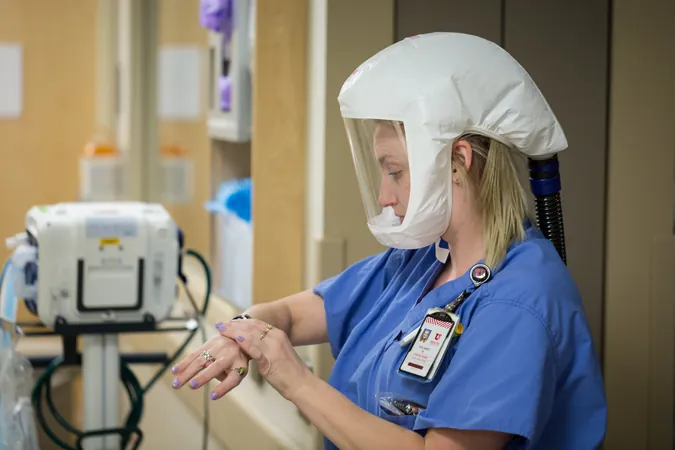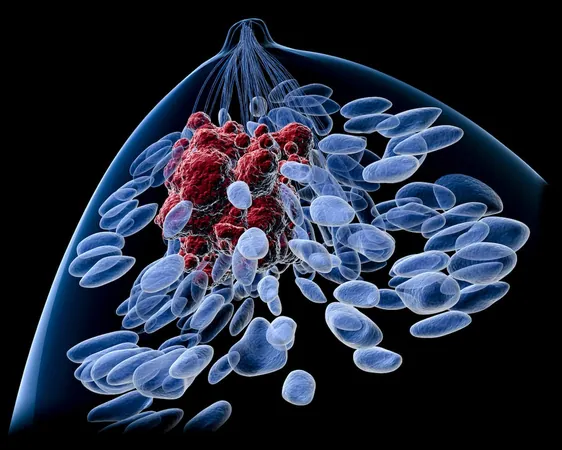
Hospital Study Reveals Shocking Truth: C. diff Spreads More Rampantly Than Previously Believed!
2025-04-04
Author: Mei
Hospital Study Reveals Shocking Truth: C. diff Spreads More Rampantly Than Previously Believed!
In a groundbreaking study, researchers have discovered that Clostridium difficile infection, more commonly known as C. diff, spreads within intensive care units (ICUs) more than three times faster than previously estimated. This alarming revelation could reshape how hospitals manage and control this dangerous infection.
C. diff is notorious for causing severe diarrhea, abdominal pain, and fever, with approximately 6% of cases proving fatal in the United States. Initially, experts believed that direct transmission between patients was uncommon; however, this new research flips that assumption on its head by demonstrating a much broader pattern of bacterial movement in hospital environments.
Dr. Michael Rubin, an epidemiologist and infectious disease specialist at the Spencer Fox Eccles School of Medicine at the University of Utah, emphasized the importance of acknowledging the unseen dynamics at play. "There's a lot going on under the hood that we're just not seeing. Ignoring this could put patients at unnecessary risk," he cautions.
New Research Method Unveils the Truth
By tracking C. diff across nearly 200 patients in two ICUs and sampling thousands of surfaces and healthcare providers' hands, the research team employed whole genome DNA sequencing. This technique allowed them to detect genetic differences that trace the pathways of bacterial movement, revealing a startling persistence of C. diff in hospital settings.
Results showed that the bacteria were present during 10% of patient stays, either on the patients themselves or in their environments. Most notably, the genetic similarity between samples collected from different patients suggested that bacteria transferred from one patient to another through shared surfaces rather than mere direct contact.
The Hidden Danger: Unseen Transmission
What truly sets this study apart is the discovery of potential transmission events happening long after patients had left the hospital. Over half of these events involved patients who had never even been in the facility at the same time. The key culprit? The resilience of C. diff, which can survive on surfaces for extended periods, successfully evading common sterilization methods, including alcohol-based hand sanitizers. This creates a ticking time bomb for unsuspecting patients who may come into contact with contaminated surfaces long after a previous patient has been discharged.
While it's important to note that not all C. diff strains are dangerous, the researchers warn that the proliferation of non-pathogenic strains indicates the potential for more harmful varieties to similarly spread undetected.
Towards Safer Hospital Practices
With these findings, the importance of stringent infection control measures in healthcare settings cannot be overstated. Dr. Rubin stresses the need for healthcare providers to implement stronger infection prevention protocols, including the consistent use of personal protective equipment like gloves and gowns, alongside robust hand hygiene practices.
"I hope this study prompts a renewed commitment to infection control measures. These actions are crucial to interrupting this type of invisible transmission," he asserts.
This study, published in JAMA Network Open, is a wake-up call to hospitals across the nation. With C. diff spreading at such an alarming rate, it underscores the urgent need for improved hospital safety protocols to protect vulnerable patients in critical care settings. The fight against C. diff has certainly taken on a new urgency—one that healthcare facilities cannot afford to ignore!



 Brasil (PT)
Brasil (PT)
 Canada (EN)
Canada (EN)
 Chile (ES)
Chile (ES)
 Česko (CS)
Česko (CS)
 대한민국 (KO)
대한민국 (KO)
 España (ES)
España (ES)
 France (FR)
France (FR)
 Hong Kong (EN)
Hong Kong (EN)
 Italia (IT)
Italia (IT)
 日本 (JA)
日本 (JA)
 Magyarország (HU)
Magyarország (HU)
 Norge (NO)
Norge (NO)
 Polska (PL)
Polska (PL)
 Schweiz (DE)
Schweiz (DE)
 Singapore (EN)
Singapore (EN)
 Sverige (SV)
Sverige (SV)
 Suomi (FI)
Suomi (FI)
 Türkiye (TR)
Türkiye (TR)
 الإمارات العربية المتحدة (AR)
الإمارات العربية المتحدة (AR)